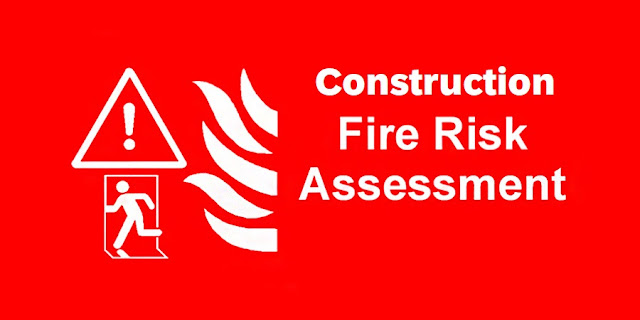FIRE RISK ASSESSMENT IN
CONSTRUCTION - IDENTIFY
SOURCES OF FUEL
ELECTRICAL SAFETY BASICS TRAINING
BOOM LIFT, DOZER (Bulldozer) - PICTORIAL CHECKLIST
In many countries, the regulation requires a suitable
and sufficient fire risk assessment to be carried out by a accountable person.
The below basic principles are relevant to fire risk
assessment in all circumstances. However, note that there will be different
things to consider for new builds compared with the renovation of an existing
building.
For a newly build, the assessment will include its
location and proximity to other buildings, the type of construction materials
and methods.
When identifying potential fire hazards, as well as
looking at hazards on site, try to identify hazards on adjacent properties; for
example, whether a neighboring property has flammable materials stored adjacent
to the shared boundary.
We all know, for a fire to start, the below three
things are needed
ü heat (a source of ignition);
ü fuel; and
ü oxygen.
If any one of these is missing a fire cannot start.
Taking measures to prevent these three coming together will therefore reduce
the chances of a fire occurring.
The below points will help & advise on how to
identify potential fuel sources, the materials that might fuel a fire, and the
oxygen supplies which will help it burn.
Identification of sources of fuel
Everything that burns is fuel for a fire. We are using many materials that can burn are used
during construction work. Dropping the quantity of material on site,
and therefore the level of fire loading, reduces the probabilities of fire occurring and limits the
extent of any fire. Double ensure that sources of fuel that may
accelerate a fire, or that may create explosive atmospheres, are secured in
well ventilated spaces as far away as feasible from sources of ignition.
Always look for the things that will burn and
are in enough quantity to provide fuel for a fire or cause it to spread to
another fuel source. Some of the fuels most commonly found on construction site include:
CRANE SAFETY - FREE TRAINING MODULE
Ø Components of the structure itself or materials
being stored to be used to form part of the structure, such as some composite
panels, insulation, PVC and timber;
Ø Rubbish;
Ø Flammable liquids, such as paints and
varnishes;
Ø Protective coverings;
Ø Scaffold sheeting;
Ø Volatile flammable materials, such as paints,
thinners;
Ø Fuel for plant and portable equipment;
modern batteries or sources of hydrogen (fuel);
Ø Gas cylinders containing flammable gases,
such as those used in bitumen boilers and heaters;
Ø Acetylene;
Ø Packaging materials;
Ø Petrol disc cutters and other portable equipment;
and
Ø Fall-arrest bags.
Part 2 ADNOC & GULF HSE Interview Q & A





No comments:
Post a Comment